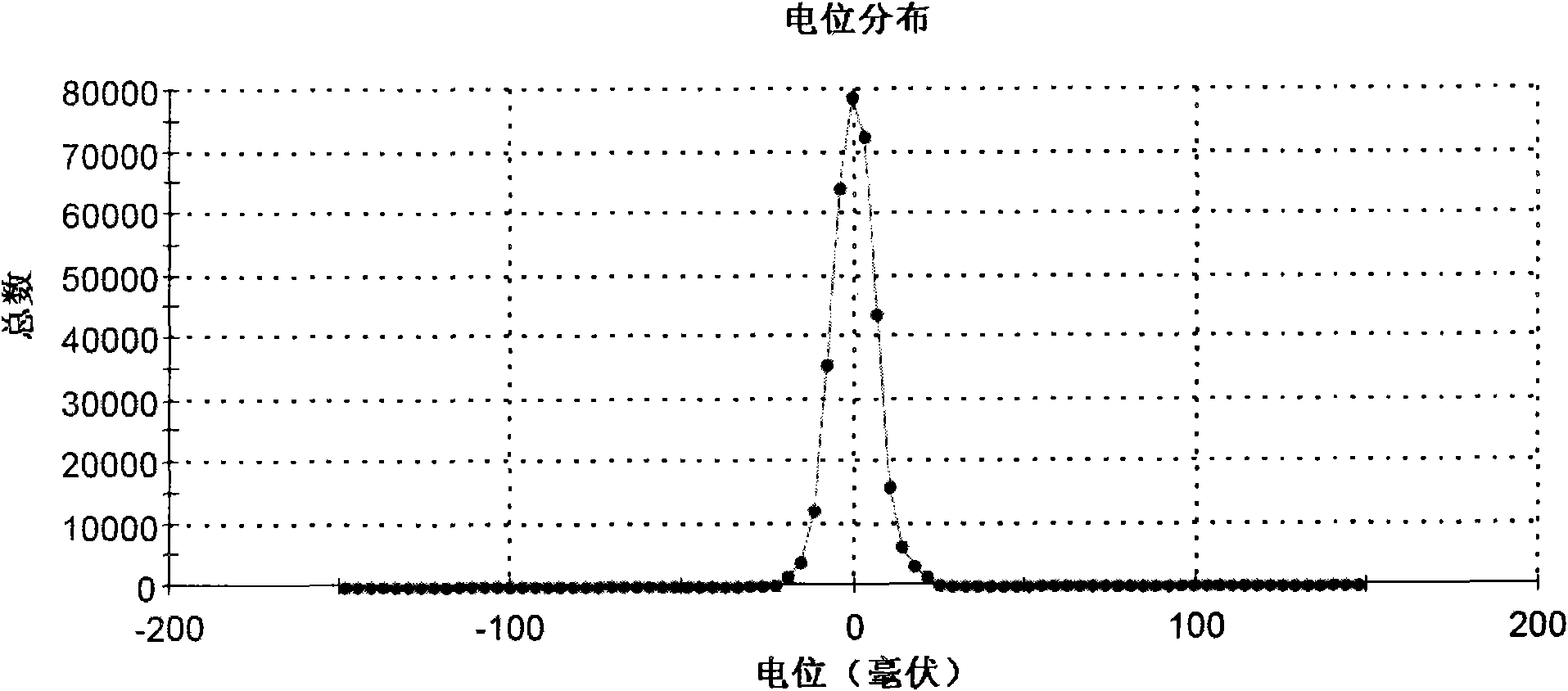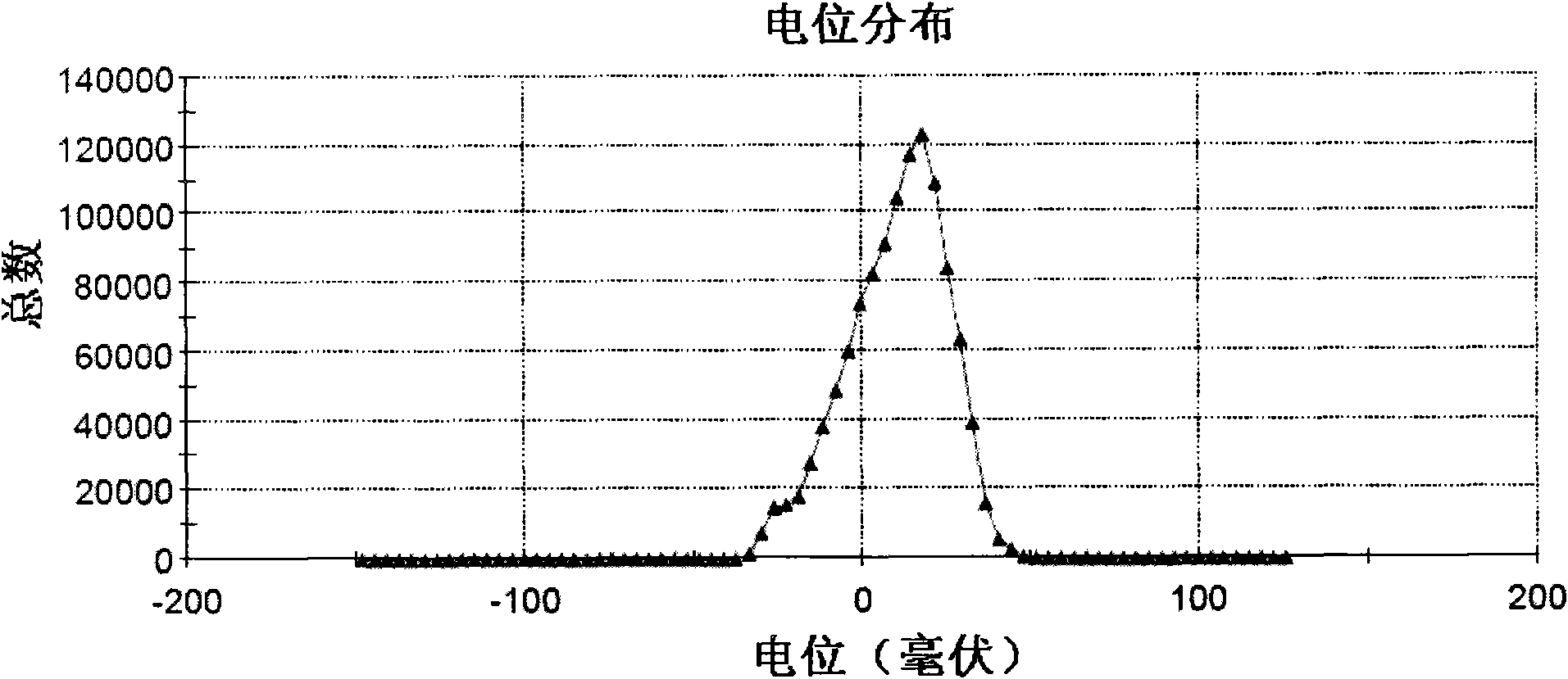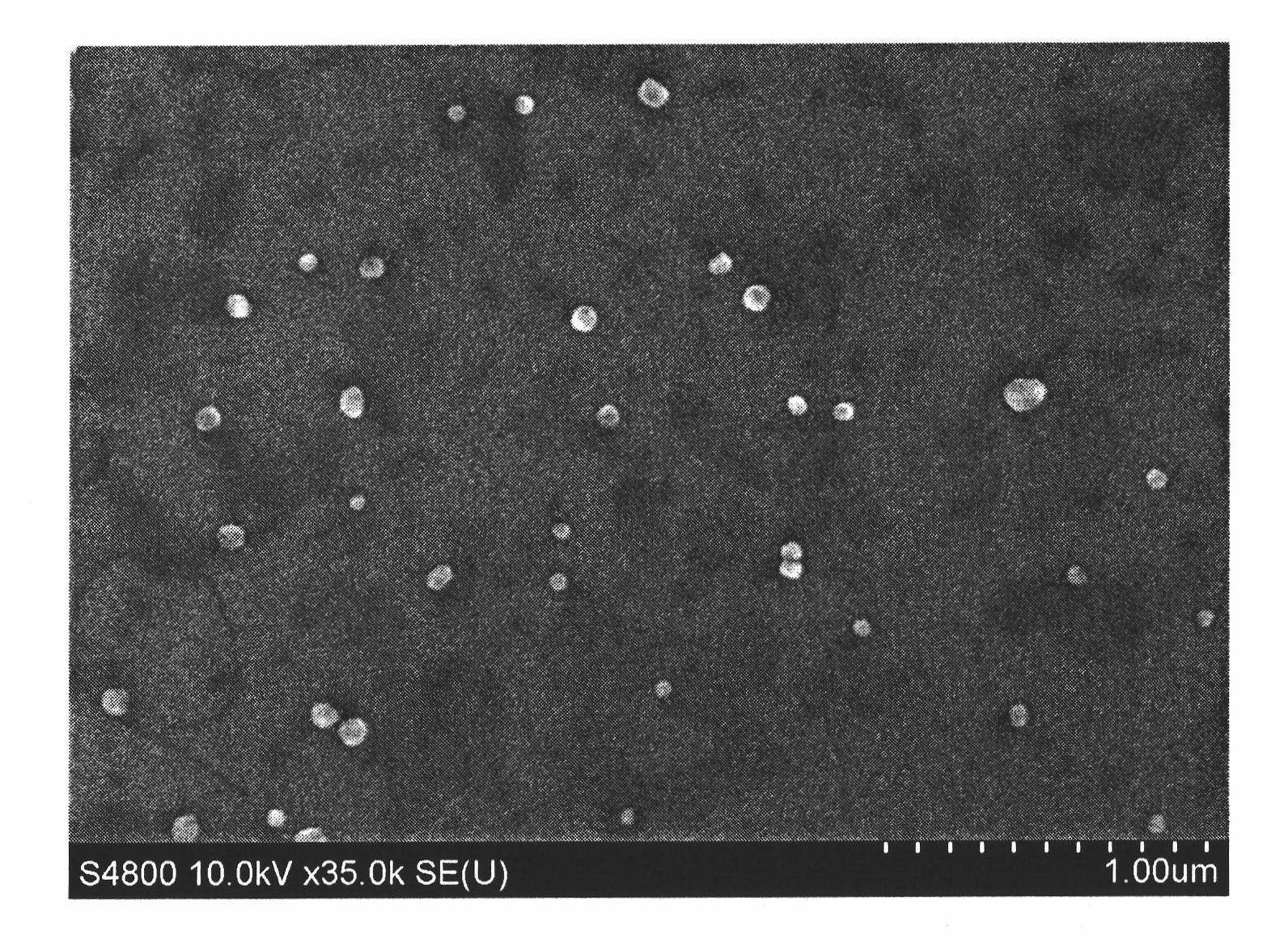Nanoparticle preparation method and nanoparticles prepared by method thereof
A nanoparticle and microemulsion technology, which can be used in non-active medical preparations, pharmaceutical formulations, inorganic non-active ingredients, etc., can solve the problems of poor repeatability of gene transfection and achieve the effect of ensuring safety.
- Summary
- Abstract
- Description
- Claims
- Application Information
AI Technical Summary
Problems solved by technology
Method used
Image
Examples
preparation example Construction
[0019] The invention provides a method for preparing nanoparticles, the method comprising mixing a first microemulsion with a second microemulsion to obtain a nanoparticle a; the first microemulsion contains a surfactant, an organic solvent and a first reactant An aqueous solution, the second microemulsion contains an aqueous solution of a surfactant, an organic solvent and a second reactant; the first reactant and the second reactant can form a precipitate after contact; the surface activity in the first microemulsion The agent is the same as the surfactant in the second microemulsion.
[0020] In order to realize the controllable synthesis of nanoparticles and prevent their agglomeration, the surfactant uses oil-soluble polyoxyethylene-polyoxypropylene block copolymer surfactant (Pluronic) and water-soluble polyoxyethylene-polyoxypropylene block copolymer surfactant. A mixture of segment copolymer surfactants (Pluronic), cationic surfactants such as cetyltrimethylammonium br...
Embodiment 1
[0044] Preparation of nanoparticles
[0045] (1) Preparation of the first microemulsion: after getting 3.3g Pluronic L64 (Germany BASF Company), 0.3g Pluronic L61 (Germany BASF Company) and 0.4g isopropyl myristate (U.S. ACROS Company) to mix well, add dropwise 45μl calcium chloride aqueous solution (12.5mM), stirred for 12h.
[0046] (2) Preparation of the second microemulsion: after getting 3.3g Pluronic L64 (Germany BASF Company), 0.3g Pluronic L61 (Germany BASF Company) and 0.4g isopropyl myristate (U.S. ACROS Company) to mix well, add dropwise 45μl disodium hydrogen phosphate aqueous solution (12.5mM), stirred for 12h.
[0047] (3) At 25°C, add the second microemulsion to the first microemulsion, and continue stirring for 12 hours; centrifuge at 8000 rpm for 30 minutes, wash twice with absolute ethanol, and finally disperse with 1ml double distilled water to obtain nanoparticle sol.
[0048] The obtained nanoparticles were detected by a laser particle size analyzer, an...
Embodiment 2
[0050] Preparation of nanoparticles
[0051] (1) Preparation of the first microemulsion: after getting 2.14g Pluronic P123 (Germany BASF Company), 1.29g Pluronic P85 (Germany BASF Company) and 0.57g n-hexane and mix well, add dropwise 135 μ l calcium chloride aqueous solution (0.1M) , stirred for 12h.
[0052] (2) Preparation of the second microemulsion: After mixing 2.14g Pluronic P123 (Germany BASF Company), 1.29g Pluronic P85 (Germany BASF Company) and 0.57g n-hexane, drop 135 μl of diammonium hydrogen phosphate aqueous solution (0.06M ), stirred for 12h.
[0053] (3) At 25°C, add the second microemulsion to the first microemulsion, and continue to stir for 12 hours; centrifuge at 8000 rpm for 30 minutes, wash twice with absolute ethanol, and finally disperse with 1ml of double-distilled water to obtain nano Particle sol.
[0054] The obtained nanoparticles were detected by a laser particle size analyzer, and the result was similar to that of Example 1. The surface of th...
PUM
 Login to View More
Login to View More Abstract
Description
Claims
Application Information
 Login to View More
Login to View More - R&D
- Intellectual Property
- Life Sciences
- Materials
- Tech Scout
- Unparalleled Data Quality
- Higher Quality Content
- 60% Fewer Hallucinations
Browse by: Latest US Patents, China's latest patents, Technical Efficacy Thesaurus, Application Domain, Technology Topic, Popular Technical Reports.
© 2025 PatSnap. All rights reserved.Legal|Privacy policy|Modern Slavery Act Transparency Statement|Sitemap|About US| Contact US: help@patsnap.com



